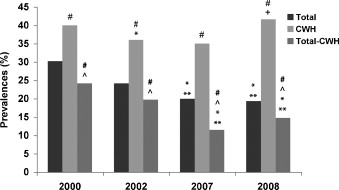
Epidemiological survey of canine heartworm disease on the island of Gran Canaria (Canary Islands – Spain) between 2000 and 2008.
Veterinary Parasitology. Volume 173, Issue 1-2, October 2010, Pages 165-168
Montoya-Alonso, J.A., Carretón, E., Juste, M.C., Mellado, I., Morchón, R., Simón, F.
Abstract
Canine cardiopulmonary dirofilariosis caused by Dirofilaria immitis is endemic on the island of Gran Canaria. Epidemiological surveys have shown differences in the prevalence of heartworm disease in the canine population of the island between 1989 and 1998. The aim of the present study was to follow-up the prevalence of D. immitis in both the canine population as a whole and the Canarian Warren Hound population on Gran Canaria between 2000 and 2008. Prevalences observed were always significantly higher in the Canarian Warren Hound population than in the entire canine population. A significant decrease in the prevalence (from 30.19% to 19.36%) in the whole population was observed. In the Canarian Warren Hound the prevalence decreased slightly between 2000 and 2007 (40.42-34.65%), rising in 2008 to values higher than those observed at the beginning of follow-up study (41.6%). These changes are mainly attributed to lack of preventive chemotherapy and the prolonged exposure of the Canarian Warren Hound to mosquito bites. As this breed can act as a natural reservoir in Gran Canaria, regular surveillance is needed to detect changes in the epidemiological picture on this island.



